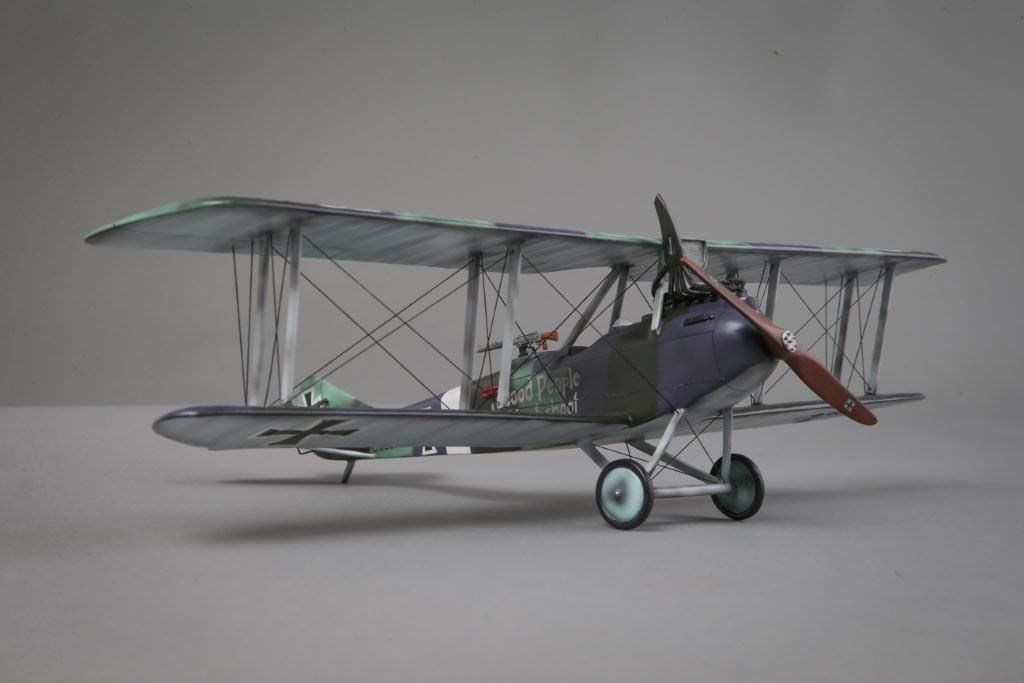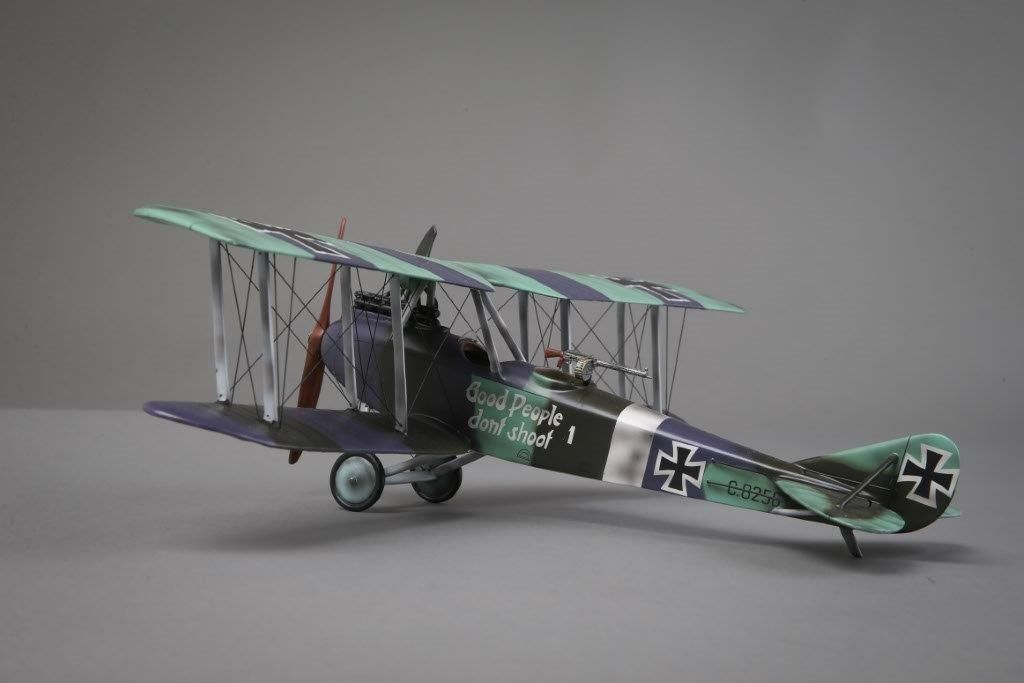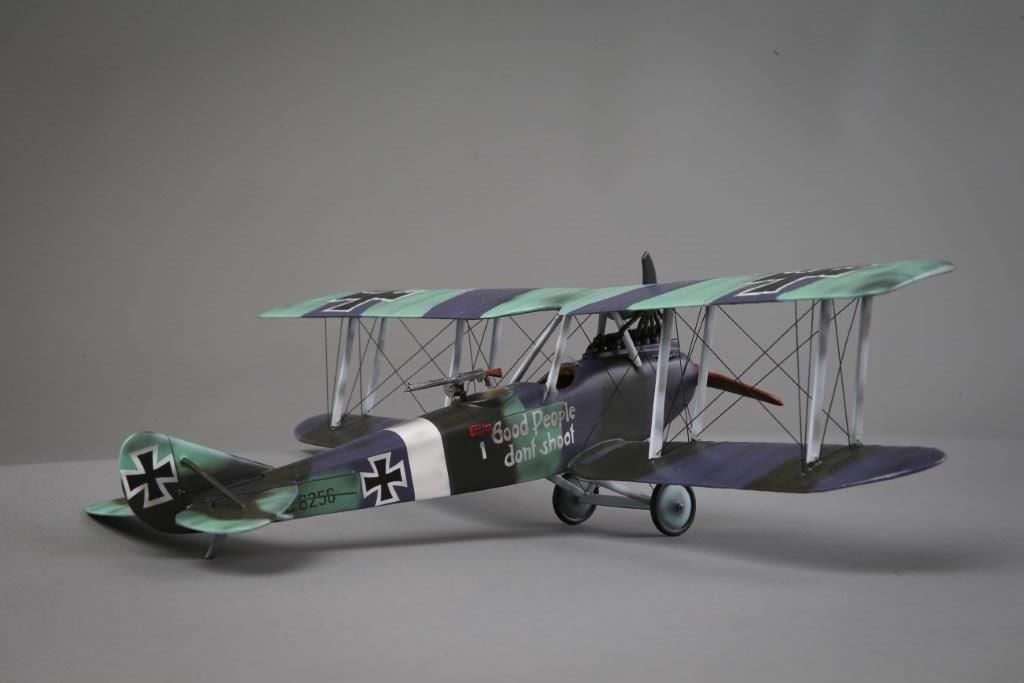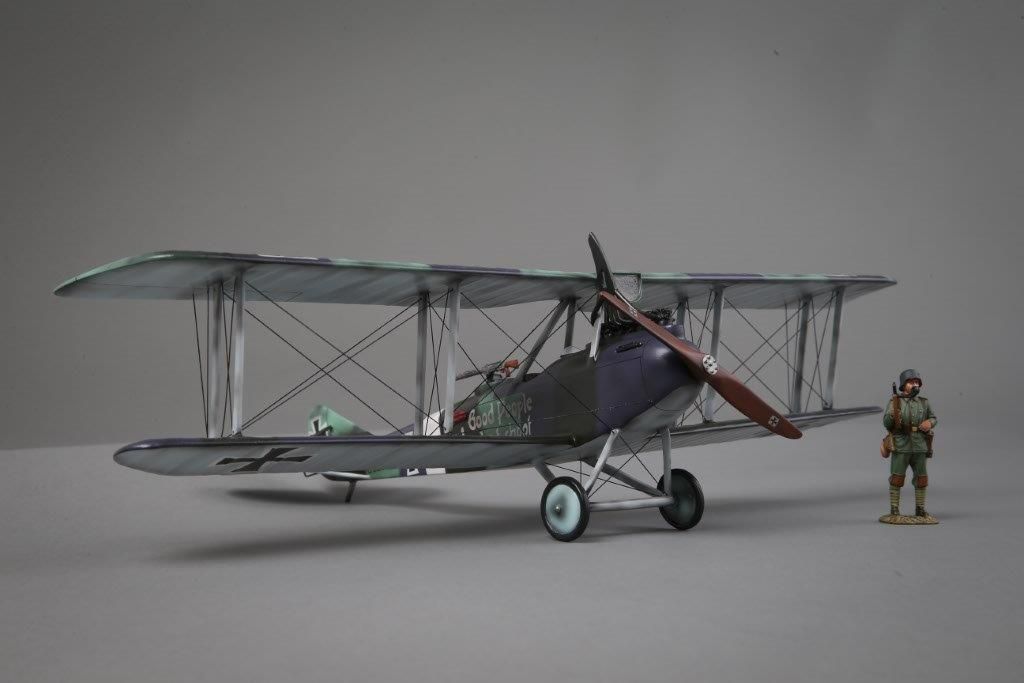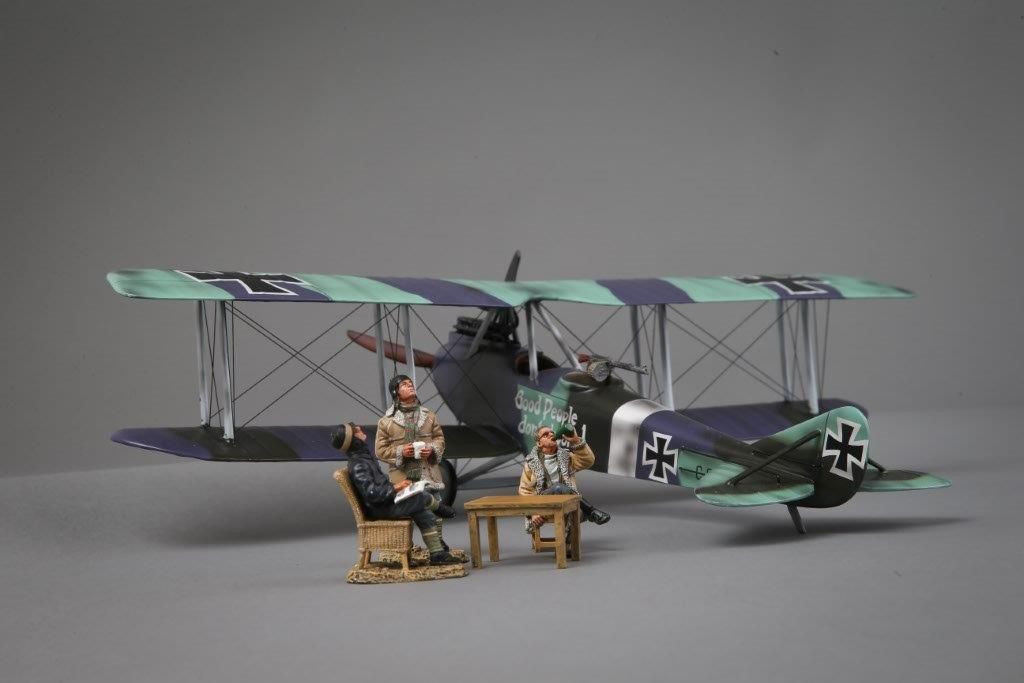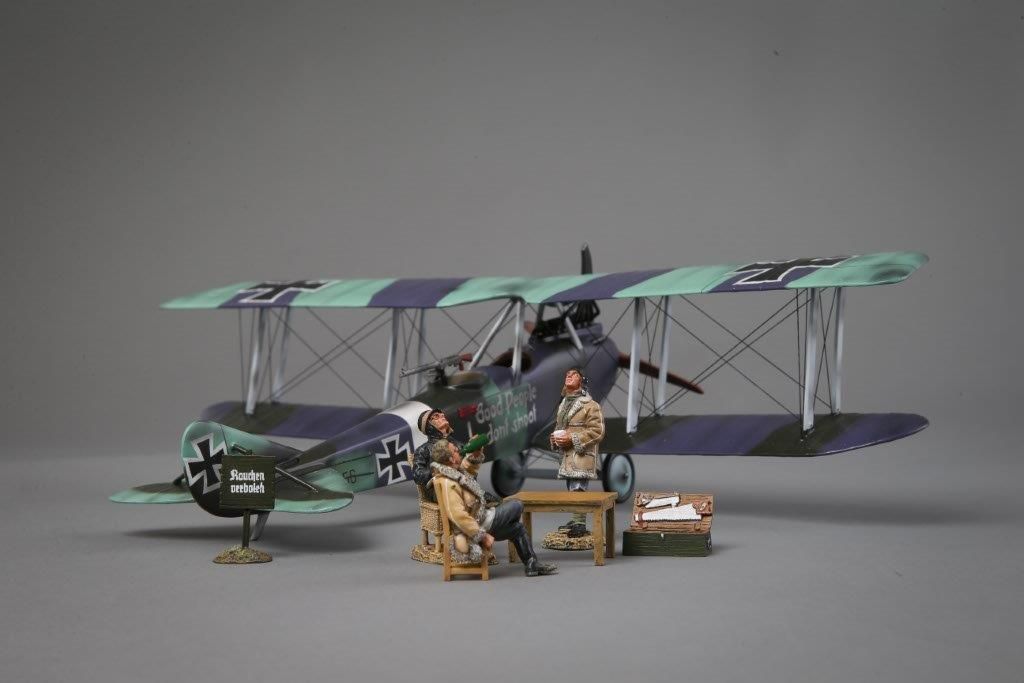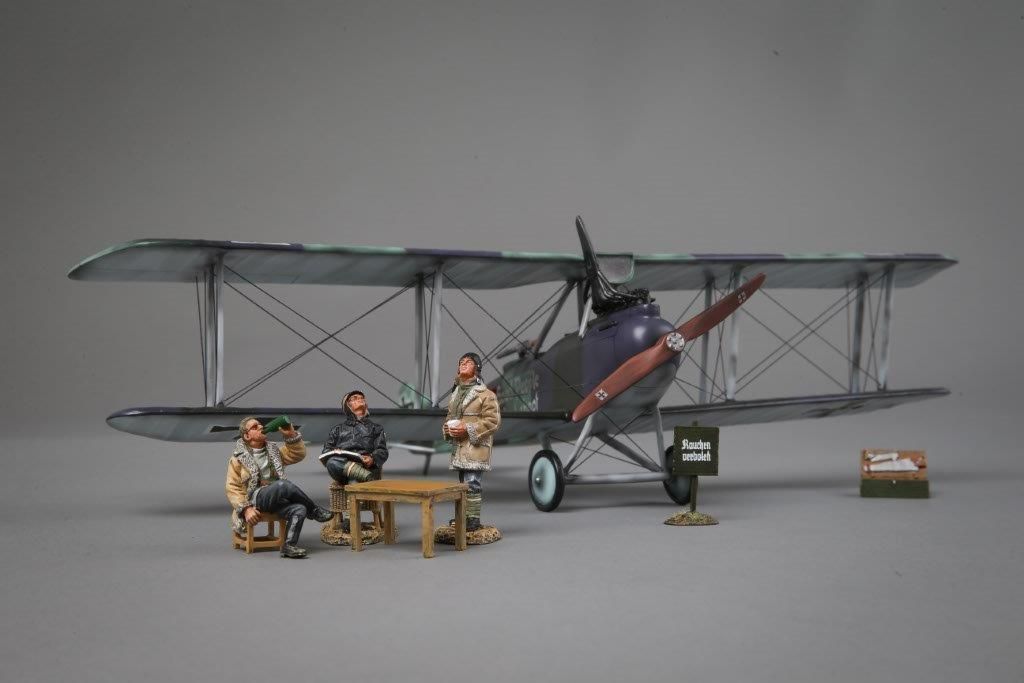Dear All
Welcome to our final newsletter for February featuring 3 all new 1/30 scale wooden aeroplanes, this time from WW1. All our aircraft are hand carved in Mahogany and it takes approximately 60 hours to manufacture each model. We like to think we are flexible on payment terms which means you can pay upfront or spread the cost over 3 months if this suits, please contact me for details if you are not familiar with this scheme. Also if you would like a custom made model please contact us by email, let us know what you are after, the scale and we will send you a quote. We have made a few custom warbirds but have held off advertising for new work until our factory increased capacity, this is now in place so please let us know of any dream war birds you would like making!
Our first aircraft WOW064 an all new Rumpler C 1V (Late war variant) comes in an attractive camouflage colour scheme and a cheeky warning painted on the side stating 'Good people don't shoot!' which obviously did not apply to the occupants who were armed with a Parabellum MG14 to ward off any would be attackers. Appearing in early 1917 the Rumpler C 1V excelled in its role of photo reconnaissance, light bomber and artillery spotter. Its ceiling of 21,000 feet ensured it could operate with impunity for most of its service career, a maritime floatplane variant was also built. Operating on all fronts the Rumpler gave admirable service during its wartime career and continued post-war with several airforces. This is going to be our last Rumpler C 1V for the foreseeable future and for those of you who missed out on the previous release I would recommend an early reservation of this model, as once it's gone it's gone! Limited to 15 models worldwide and priced at $525 which also includes the sentry figure (GW060C) as a freebie.
Our second aircraft WOW068 the late war Sopwith Snipe was the RAF's preferred replacement for the venerable Sopwith Camel. Designed by Herbert Smith the Chief designer at Sopwith, the Snipe had a top speed of 121 MPH and a 3 hour endurance. Sopwith also extended the original wing span which gave the Snipe the facility to operate up to heights of 19,500ft, another plus over the Camel.
The Snipe was considered more manoeuvrable than the Camel with better pilots vision especially upwards where part of the upper wing was cut away to facilitate this. Entering service in 1918 some 500 Snipes had been produced before the war ended, post war the Snipe was chosen by the RAF to be its mainstream fighter and soldiered on until 1926 in military service.
Only 2 combat Sqns were equipped with the Snipe before the war ended, 43 Sqn RAF and 4 Sqn Australian Flying Corps. Our model is a 4 Sqn machine flown by Lt Thomas Baker who had 12 confirmed kills to his name. Enlisting in 1915 when he was 18 years old, Baker a former bank clerk enlisted in the artillery before requesting a transfer into aviation. He started flying with 4 Sqn in July 1918 but exactly 1 week before the war ended Baker was killed whilst fighting a large number of Fokker 7's, he was only 21 years of age.
A limited run of 12 Snipes in the markings of Bakers machine are available, priced at $425 and includes the sentry figure (or similar|) free as per the photos attached.
The third of our aircraft WOW070 The Spad S.7 was the forerunner of the famous Spad 13 and was one of the most outstanding aircraft to emerge from the French aeroplane manufacturer, Societie pour L'aviation et ses Derives (Spad) during the Great War conflict. The S.7 was a smaller version of the S.A 'Pulpit' fighter but had the observers forward seat and armament removed. Based around the Hispano-Suiza V8 engine which would eventually generate 180 HP with a top speed of 129 MPH, the Spad S.7 quickly became a favourite of the pilots who flew it, due to its excellent diving characteristics and sturdy structure. It was however not as nimble as the Nieuports it had replaced but was considered less likely to shed a wing in a dive, obviously something to consider before switching back to a Nieuport!
Entering large scale service in 1917 with over 4000 being produced the Spad S.7 entered service with French, British, Italian and Belgian Air Forces amongst others. It's one major drawback was its armament of only 1 Vickers machine gun when most new aircraft of the time were being armed with 2 machine guns.
Our aircraft is one flown by Lt George Turnure of the 103rd Aero Squadron in a very attractive 5 tone camouflage scheme, Turnure was a recent graduate from Harvard prior to the outbreak of war and is credited with 2 possibly 3 aerial victories before being transferred as a flight commander to the 28th Aero Squadron. He was awarded the legion of Honour and Croix De Guerre with 3 palms and a star before the armistice ended his military career. Returning to New York, Turnure went to work in investment securities before dying prematurely at only age 24 years old, although the cause of death is not recorded. The 103rd Aero Squadron was an elite fighter pursuit Sqn with many American pilots from the Lafayette Escadrille, being transferred into it after the USA's official entry in WW1, its lineage still continues to this day in the form of the 94th USAF Sqn. We have 12 Spad S.7 available worldwide and have priced them at $425 which also includes the French sentry figure free.
Three new aircraft should be enough for anyone, so I am calling it a day and do hope you have enjoyed reading our newsletter
The figures release will be on 4th March in 1 weeks time, there will be some new RS Aussies including the jungle hut, the Kings German Legion and also the USMC make an entrance!
Best wishes
The Gunn Team
